Last year, amidst a global reckoning around anti-Black racism, Canadian universities stood back to take stock of the ways the problem exists and operates at their own institutions. Schools across the country made statements of solidarity, declaring that racism had no place in their campuses and pledging to support Black students, staff and faculty.
Even before last summer’s protests, which were brought on by heightened attention to police and state violence against Black people in the U.S. and Canada, there was a conversation taking place about anti-Black racism at Canadian postsecondary institutions. In March of 2020, journalist and Western University alumna Eternity Martis detailed her own personal experiences in a memoir titled They Said This Would Be Fun: Race, Campus Life, and Growing Up. In the book, she chronicled her time as a student at Western, which is located in the predominantly white city of London, Ont.
Often the only Black person or person of colour in her classes, Ms. Martis says there was an insidious culture of racism at the school, from constant microaggressions to overt threats of violence. “The entire class would be full, and the seat [beside me] would always be empty,” she says. Still, there were far more explicit and traumatizing ways that the racism on campus would manifest itself.
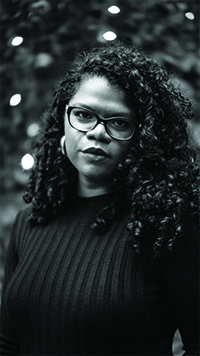
Misquita.
“In my third year when I was on campus, there were these really drunk first-year students … and they asked where they could get food,” she recalled. “My partner at the time said, ‘Well, you can go to the student centre,’ and instead of saying thank you, they started yelling the N-word and telling us to go back to our country and then tried to threaten to actually beat me up.” Despite the university’s promised zero-tolerance policy for racism, Ms. Martis says little was done to address the situation or reassure them of their safety on campus.
Students and faculty at the University of British Columbia have also taken the school to task for incidents of anti-Blackness on its campus. One case in 2019 involved a graduate student from Nova Scotia named Shelby McPhee, who was racially profiled and accused of stealing a laptop while attending Congress at UBC.
“In most of my career, I’ve been the first or the only, and with that comes various kinds of experiences, whether it’s microaggressions [or] people trying to project their limits on you.”
“He was identified as young and Black and male, and therefore not belonging in an academic setting,” says Handel Wright, a professor at UBC and senior advisor to the president on anti-racism and inclusive excellence. This kind of blatant or “direct” racial discrimination isn’t the only way that anti-Blackness rears its head at these institutions. There are a myriad of ways that Black students, staff and faculty find themselves affected by more institutionalized forms of racism.
For Malinda Smith, inaugural vice-provost, equity, diversity and inclusion, and professor of political science at the University of Calgary, spending years as the only Black female full professor in her discipline has given her first-hand insight into the layered and complex nature of the issue.
“In most of my career, I’ve been the first or the only, and with that comes various kinds of experiences, whether it’s microaggressions [or] people trying to project their limits on you,” she says. “You know that there are tables you’re not invited to, and doors that remain closed.” Even in institutions where there is an effort to address these broad inequities, the lingering effects of that historical exclusion always show up, Dr. Smith says.
“The emphasis is on not only attracting [and] hiring, which needs to be done, but also on ensuring success, retention and mentoring.”
“You are lucky if you are in an environment which is shaped by a culture of mentoring and sponsorship and inclusion, where the senior leadership team has done the work necessary to transform itself,” she says. “I can say I have had some of those experiences, as well as [experiences] on the other side where the work hasn’t been done, and where you end up feeling tokenized.”
For people like Dr. Wright and Ms. Martis, the large-scale responses triggered by the protests of summer 2020 are long overdue. And feeding off the momentum of those few months, most schools responded in ways that were specific to their history and to the already-identified cultures of anti-Blackness that exist within them.
New commitments
At the height of last year’s protests, UBC committed to a number of actions to address anti-Blackness on its campus. These actions included better accountability and education around issues of anti-Black discrimination as well as a promise to address the demands of the Black caucus, a group that was formed in response to the Shelby McPhee incident. Through listening sessions hosted by the university’s president, Dr. Wright says that several Black community groups have raised concerns about how the university attracts and keeps Black students and faculty, the lack of university chairs on topics relating to Blackness, and the need to strengthen the university’s African Studies minor.
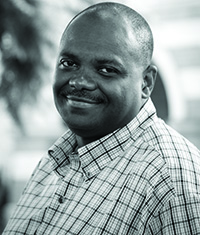
the University of British Columbia.
“The emphasis is on not only attracting [and] hiring, which needs to be done, but also on ensuring success, retention and mentoring,” says Dr. Wright.
The summer of 2020 was also a crucial time at Ryerson University, which released its Anti-Black Racism Campus Climate Review in July. The paper outlined the experiences of Ryerson’s Black community through a series of focus group sessions and one-on-one interviews.
“The past year has been critical in identifying and implementing initiatives at Ryerson that support our students, faculty and staff, including providing some new and improved support mechanisms,” says Denise O’Neil Green, vice-president, equity and community inclusion, at Ryerson.
Dr. O’Neil Green is also one of three co-chairs of the Presidential Implementation Committee to Confront Anti-Black Racism, which was convened by Ryerson president Mohamed Lachemi to look into the results of the climate review. The document listed 14 recommendations that would help create a more equitable and inclusive environment for the Black community at Ryerson. Those recommendations included diversifying the curriculum, training for on-campus security, creating dedicated spaces on campus for Black students, increasing the representation of Black faculty and providing opportunities for advancement for Black staff.
Those priorities are similar to five initiatives that University of Ottawa president Jacques Frémont announced last January, and committed to implement by this fall, following a series of race-related incidents.
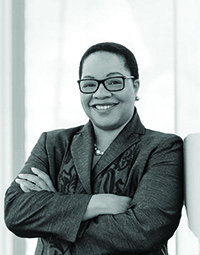
of Ryerson University.
The most recent occurred in September 2020 when Verushka Lieutenant-Duval, a white part-time professor of history and theory of art, used the N-word in class as an example of an offensive term that a community had reclaimed. Dr. Lieutenant-Duval was suspended following a complaint by a student and pending an investigation. But she returned to her duties about a month later, after apologizing for using the term and inviting students to discuss its use.
When Dr. Lieutenant-Duval returned, a group of professors released a letter of support, arguing that using the term offers educational value and that a classroom is a place for debate. Meanwhile, the university offered students the opportunity to continue the class with a different instructor, which all but one student did.
This followed two other race-related incidents at the university in 2019, which compelled the university to examine the situation. In one of those cases, a student was racially profiled by campus security, an investigation concluded. That prompted the U of Ottawa to create the President’s Advisory Committee on Anti-Racism and Inclusion, which was replaced in 2020 by the Action Committee on Anti-Racism and Inclusion. Its mandate is to review and assess university policies and practices to understand how they contribute to systemic racism, and issue recommendations to make the institution more inclusive.
Last December, the university also named its first special advisor on anti-racism and inclusion excellence. With a one-year mandate, professor Boulou Ebanda de B’béri oversees the implementation of the committee’s recommendations.
Concordia University also established a task force last year to examine anti-Black racism on campus. With eight sub-committees, its purview runs the gamut, from student services to anti-racism education and resources, to campus security.
“The task force originally was a one-year mandate [and] has been extended to two just because there’s so much work to get done,” says Angelique Willkie, associate professor in the contemporary dance department at Concordia, and co-chair of the President’s Task Force on Anti-Black Racism.
In response to an open letter last June signed by more than 7,000 people, Concordia administrators also agreed to participate in the Black Perspectives Initiative – a mentorship and funding program that was being run single-handedly at the time by task force co-chair Annick Maugile Flavien – and make it an official unit of the provost’s office.
“She was making miracles out of a 15- or 20-hour a week salary and working at least double, doing an inordinate amount of work for the Black community at Concordia,” Ms. Willkie says. “And so one of our requests was to say, ‘This actually needs to become officialized, and the need for that work also needs to be acknowledged.’”
“We see establishing and giving scholarships to prospective students as a form of reparatory justice.”
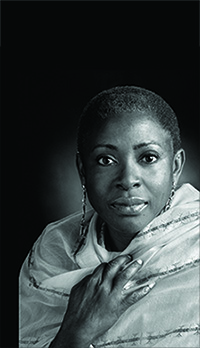
At other institutions, the path to addressing anti-Blackness started with taking a step back in time and examining how their histories may have been intertwined with racism. In anticipation of Dalhousie University’s 200th anniversary – and at the urging of Black community members who were aware of its fraught past – officials commissioned the Lord Dalhousie Scholarly Panel on Slavery and Race in 2016.
“There was really an elephant in the room and that was Lord Dalhousie,” says Afua Cooper, professor of Black studies in the department of sociology and social anthropology at Dalhousie. “He was an anti-Black racist. So, for many of us Black people on campus, we were thinking, ‘Here we are in this institution that is geared to celebrate its 200th anniversary, but the man who founded it didn’t like Black people and wanted to expel them from the province of Nova Scotia.’”
Spanning three years and looking intensely at research from England, Scotland and Canada, the panel unearthed a history of complex entanglements between Dalhousie and the slave economy in Canada and the Caribbean. The key findings stretched back to the university’s very foundations. Established in 1880, the first source of endowment for Dalhousie came from a pool of money called the Castine Fund. “These were the fees that the ships had to pay at custom houses and at the ports,” Dr. Cooper explained. “And these would be incoming ships from the West Indies that were laden with sugar and molasses, and rum, and cocoa and coffee and so on, that were grown by Black enslaved people in the Caribbean.”
According to the report, the university was established with about £12,000 of this money, equivalent to roughly $1 million today. In response to the findings, in 2019 interim Dalhousie president Terri Balser issued an apology to the Black people of Nova Scotia for its ties to this history.
Taking action
The work of the panel stayed relevant through last year’s protests, as the university continues to take steps to respond to recommendations in the panel’s report. This year, Dalhousie established the Sankofa scholarship for students of African descent, which has already been disbursed to three incoming students for this fall. “We see establishing and giving scholarships to prospective students as a form of reparatory justice,” Dr. Cooper says. She and her colleagues also successfully lobbied for the creation of the first Black studies bachelor of arts program in Canada, which will kick off in September 2022. (A Black studies minor already exists, but that will be turned into a full bachelor’s program).
Other universities have also begun taking steps to respond to anti-Blackness on campus. UBC appointed two executive leads on anti-racism, in addition to Dr. Wright’s appointment as senior advisor on anti-racism and inclusive excellence in November 2020. The broader Taskforce on Anti-racism and Inclusive Excellence was established in December and began its work in March.
“It takes time for people to recognize that in their nature, in their essence, they are discriminatory. And so I do think that it requires patience, courage, staying power, and vigilance.”
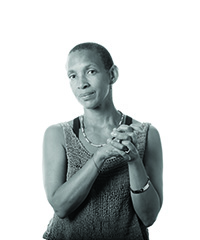
Photo by David Ward.
The university also created a new funding pathway for prospective Black students called the Beyond Tomorrow Scholars Award. “This program funds Black students from across Canada who are outstanding academically and in terms of leadership, and who would probably normally not [be able to] afford UBC or would not necessarily think of it,” Dr. Wright explains.
The scholarship is already in place, with the first cohort of 19 students set to start in September. Of that group, 17 will be attending UBC Vancouver, while two will head to UBC Okanagan. After hiring more Black faculty over the past year, UBC is in talks with the Black Opportunities Fund to set up more scholarships for Black students to attend the school.
At Concordia, the institutionalization of the Black Perspectives Office has seen the program grow from one staff member to four — a positive step that, for Ms. Willkie, speaks to the commitment from the current school administration to take these issues seriously. The task force itself was set to release interim reports at the end of June with a final report at the end of April 2022.
If the pace of these changes seems slow, those at the frontlines of the push for transformation say these things often are. “It takes time for people to recognize that in their nature, in their essence, they are discriminatory. And so I do think that it requires patience, courage, staying power, and vigilance,” says Ms. Willkie.
Ryerson, for its part, continues to explore more ways to attract and retain Black faculty, including cluster hiring. To make this happen, Dr. O’Neil Green says that the university is considering a number of strategies, such as targeted language for recruitment ads that will continue to be developed as time goes on.
Ryerson has also identified a dedicated Black students’ space on campus, which has yet to be utilized because of the pandemic. In the meantime, the school has provided virtual spaces for students to come together to engage, connect and learn about the resources available to them. Dr. O’Neil Green says the university is also increasing funding for scholarships and awards for Black students, as well as introducing a course audit to look specifically at courses with content on African, Caribbean and Black diaspora.
“An audit of this kind will allow us to determine the gaps that exist so that we can begin to address disparities in program offerings,” Dr. O’Neil Green says.
Staying accountable
At Ryerson, the three co-chairs of the Presidential Implementation Committee to Confront Anti-Black Racism report back on the committee’s progress to the president’s cabinet every month.
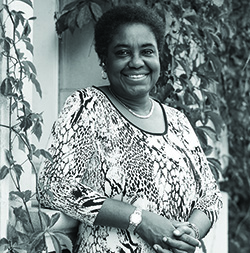
Amber Bracken.
Dr. O’Neil Green’s office also recently published a Student Diversity Self-ID Report, the first of two major reports it plans to release this year. The document aims to “showcase the diversity of Ryerson students, [and] point out where attention needs to be paid to increase the number of students from underrepresented groups and to their inclusion at the university.”
Both reports “will be used to keep track of our progress in terms of representation of Black staff, faculty and students across programs,” Dr. O’Neil Green says.
For many of the Black students and faculty who are working with these institutions to push for change, what’s most important is that all of the community is engaged in the process. This is particularly important when it comes to supporting the work of Black students and faculty who, according to Dr. Smith at the University of Calgary, have been working for years to address and eliminate anti-Black racism — long before the global reckoning that we see now.
It certainly is important for Concordia’s Ms. Willkie. “How do we make sure that everybody feels concerned? Because this is not a Black issue,” Ms. Willkie says. “This is an everybody issue.”
With collaboration from Michel Proulx.
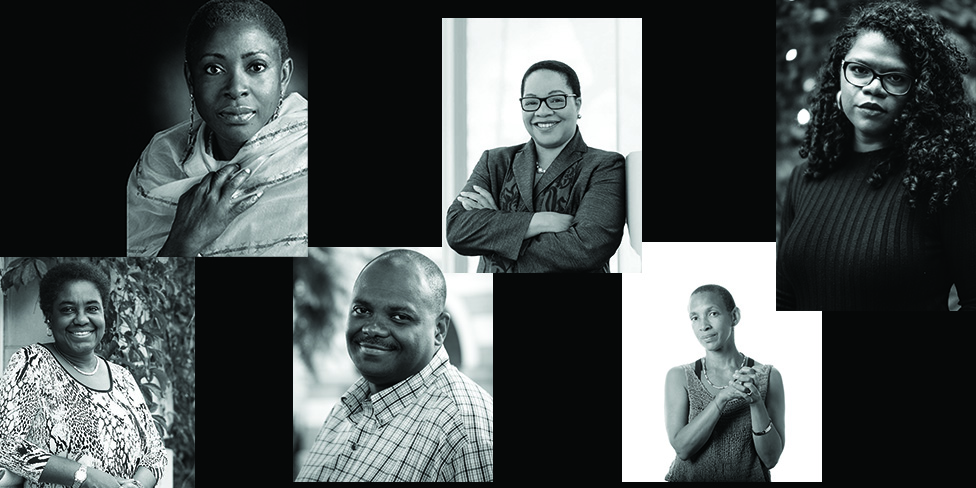
If it is an everybody issue than why is Black capitalized but not white? This is control language.